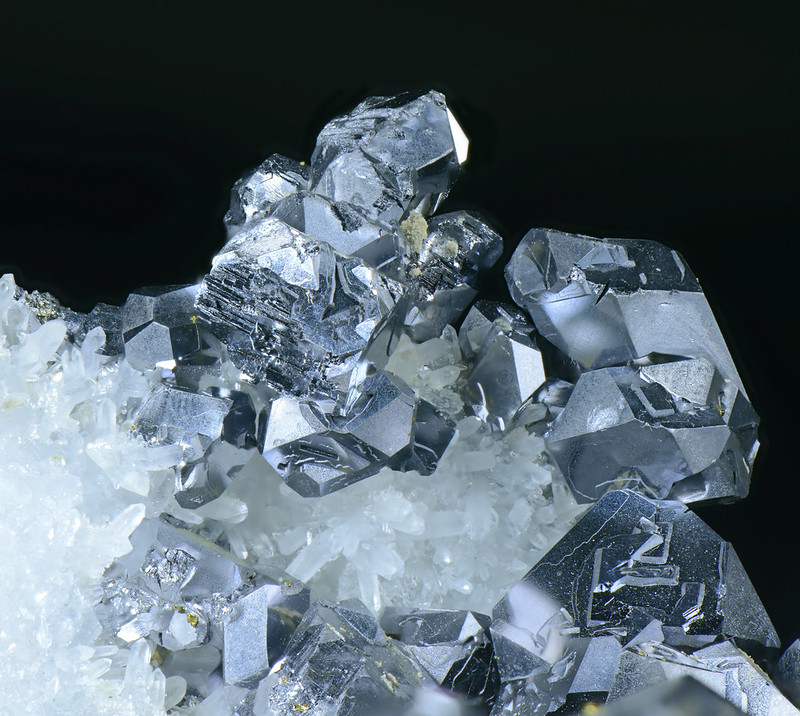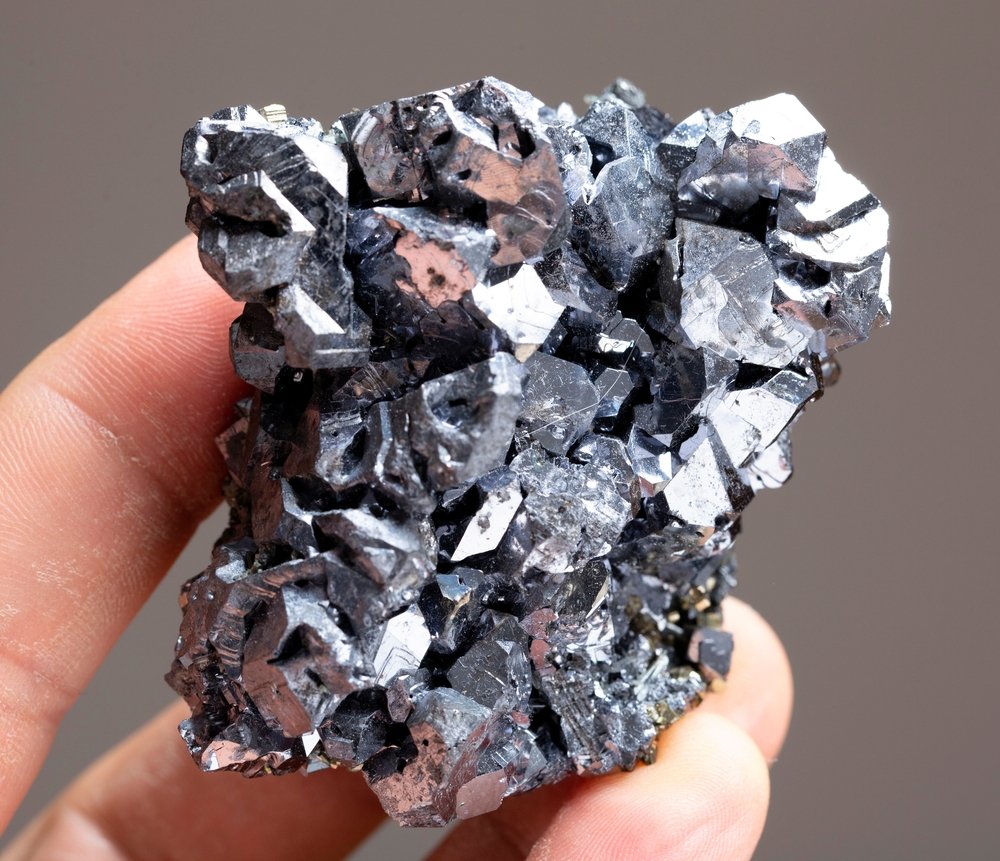Galena
Galena is a primary ore of lead. specifically, it’s lead sulfide. Long used for both it’s cosmetic properties and as a base for the dull metal, it’s got a long history alongside humanity. Surprisingly, it first seems to have been used to help deter the sun from people’s eyes in the Middle East, before the toxic properties of lead were properly accounted for.

Galena is mainly seen as cubic or octahedral crystals with a deep grey color. Good surfaces show a tell-tale metallic luster, shining and showing reflections in a way that most stones simply don’t. Some galena is argentiferous as well, meaning that it contains silver. In areas with argentiferous galena, it’s a considerable source of silver. Argentiferous galena is actually one of the best sources of silver currently available.

Galena is found in many places, basically anywhere that hydrothermal activity previously took place. Across the United States, it can be found in various quantities but the biggest deposits are in Kansas, Missouri, and Wisconsin. It’s a great mineral for collectors, with a unique history, just make sure you wash your hands after handling it to avoid lead exposure!
Classification: Sulfide mineral
Chemical Composition: PbS (lead sulfide)
Color: Lead-gray to silver
Streak: Lead-gray
Hardness: 2.5 on the Mohs scale
Cleavage: Perfect in three directions forming cubes
Fracture: Subconchoidal
Luster: Metallic
Transparency: Opaque
Crystal System: Cubic, often found as cubes or octahedra
Formation and Geology: Galena is the most important lead ore mineral and is formed in a variety of geological environments, predominantly in sedimentary and hydrothermal deposits. It is commonly found in association with sulfides of copper, zinc, and silver as part of lode deposits. Galena often occurs with other minerals, including sphalerite, pyrite, and fluorite.
Physical Properties: Galena is easily recognized by its high density, softness, and perfect cubic cleavage. It is heavy for its size due to its high lead content. The mineral can tarnish on exposure to air, developing a duller grayish-white color on the surface.
Identification Tips
- Color and Luster: Look for its characteristic shiny, metallic luster and lead-gray color.
- Cleavage: Perfect cubic cleavage is a definitive characteristic; freshly broken pieces will show a cubic structure.
- Hardness: Galena’s softness means it can be scratched with a knife.
- Density: It feels unusually heavy for its size compared to similar-sized rocks.
Locations: Significant deposits of galena are found in the USA (Missouri, Idaho, Iowa, Wisconsin), Canada, Germany, the United Kingdom, and Australia.
Uses and Significance: Historically, galena was used as a source of lead for bullets and as a cosmetic in ancient Egypt. Today, it is primarily mined for its lead content for use in batteries, in the protective shielding for radioactive protection, and in various metal alloys. Galena also contains up to 1% silver, which can be extracted and used separately.


